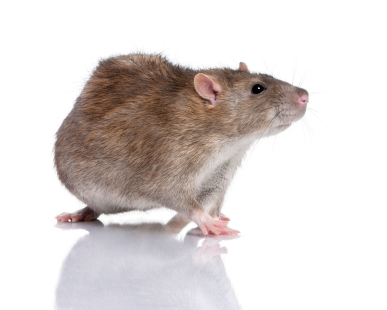Rat Infestation Signs - NYC Rodent Control
Evidence of mice/rats
Droppings:
Typically found in kitchen cabinets, pantries, cupboards, and any area they’ve scurried or looked for food. Rodents often produce and leave behind droppings so it’s an easily spotted indication you may have an infestation.
Noises:
Rodents aren’t quiet animals, if they’re in your residence or business you’ll most likely hear noises of their presence. You can often hear squeaks and rustling of them moving around from their nests. Clawing, gnawing, and scratching noises are also often heard when rodents are chewing or clawing - whether they’re trying to enter your home or are in search of food.
Urine:
Rodents are notorious for having weak bladders and will urine everywhere. You’ll often find trails and pools of urine in areas that they’ve traveled in.
Gnaw and nibble marks:
Marks on food boxes or containers are a good indication there are rodent activity. They are usually accompanied with droppings nearby and are an indication rodents have been looking for food in your cabinets and pantry. Gnaw marks on items in your home/business especially furniture made of wood are also an indication there is rodent activity. Rodents natural gnaw objects to keep their teeth razor sharp.
Smell:
Rodents emit a distinct musky odor.
Nests:
Rodents build nests from soft shredded fibrous materials and other materials like furniture stuffing, shredded paper, quilt stuffing, twigs, grass, and fabrics. They typically build these nest in sheltered areas like in walls, between ceilings and floors, shoeboxes, storage containers, and even computer cases and other large appliances.
Types of mice/rats
Difference between mice and rats
House mice are smaller rodents that are typically 5 to 8 inches in length with long thin tails. Most are either white, brown, or grey in color.
Rats are medium to large sized rodents, some can grow up to 15 inches in length. They have long tails and are usually hairless. Most are either white, grey, brown, or black in color.
Cotton rats
Moderately large rats spanning anywhere from 5 to 8 inches. Cotton rats have a fairly hairless tail that is short than the rest of its body and head combined. They’re usually grey and black in color. Mostly outdoors cotton rats are an agricultural pest and are usually found in grassy areas however they will sometimes invade buildings in search of food.
Deer mice
A rather small and slender rodent, Deer mice span anywhere from 3 to 5 inches. They have a pointed nose and distinguished large beady black eyes. Their fur coloring resembles a deer where it’s brownish-reddish on their back side and lighter more white towards their underside and feet. Often found in praries and rural wooded areas Deer mice will also enter homes during the winter in search of food. They prefer to avoid humans and are usually found in attics and basements.
House mice
House mice are a rather small rodent that spans anywhere from 3 to 4 inches. They have a pointed nose, small round ears, and a long almost hairless tail. House mice are usually light brown, grey, or black in color and usually have a lighter underside. House mice are found in grassy and wooded areas often building nests in dark protected areas. They are very active rodents and will roam often in search of food and other resources. During winter or when the temperature drops they’ll often seek refuge in homes and other structures.
Norway rats
One of the larger rodents, Norway rats can span up to 15 inches in length. They are covered in coarse fur that is usually brown or reddish grey in color and a lighter color on their underside. Norway rats are burrowing rodents and will often build nest in underground burrows which they used to enter homes and buildings in search of food.
Roof rats
Another large rodent, Roof rats can span up to 15 inches in length. They have a pointed nose, large eyes and ears, and a long tail. Their fur is smooth and are often brown or black in color. They often build nests inside and under buildings or in piles of garbage. Roof rats are excellent climbers, you’ll often find them in the upper parts of buildings and structures like attics, rafters, and roofs.

Rat Facts:
- 13" to 18" in length.
- A single pair of brown rats can produce up to 2,000 descendants per year.
- A rat can go longer without drinking water than a camel.
Have A Rat Problem?
Call us at 718-851-3403 or 212-235-7014 or:
Request A Quote
